Growing Nerium oleander:
Oleander
Back to Trees and Palms
Description
Form: A shrub or tree, depending on variety and pruning.
Leaf retention: Evergreen.
Growth rate: Moderate to rapid.
Mature Size: 3-20' (0.3-6m) high and 3-12' (0.3-3.7m) wide depending on variety.
Flowers: Red, pink, salmon, yellow, or white, in terminal clusters, with a single or double row of petals. Some varieties are fragrant. These flowers produce no nectar.
Bloom: Spring into fall.
Fruit: Brown seed pods with airborne seeds.
Leaves: Lance-shaped, 3-5" (7.6-12.7cm) long, dark green on top, lighter underneath. Oleander provides medium shade.
Stems: Cut stems exude a poisonous sticky latex.
Roots: Wide and deep.
Wildlife: A few insect larvae feed on this plant. It generally does not attract or support wildlife, is considered wildlife unfriendly, and therefore less desirable as a garden plant, especially because of its toxicity.
Toxic / Danger: All parts of this plant are toxic including its pollen. The smoke from burning leaves and stems is toxic. The sap may cause a skin rash. It should not be browsed by domesticated animals, or pets, and may cause their death.
Origin: The Mediterranean basin to southwest Asia. This plant has been so widely cultivated since ancient times that its exact geographic origin is uncertain.
Form: A shrub or tree, depending on variety and pruning.
Leaf retention: Evergreen.
Growth rate: Moderate to rapid.
Mature Size: 3-20' (0.3-6m) high and 3-12' (0.3-3.7m) wide depending on variety.
Flowers: Red, pink, salmon, yellow, or white, in terminal clusters, with a single or double row of petals. Some varieties are fragrant. These flowers produce no nectar.
Bloom: Spring into fall.
Fruit: Brown seed pods with airborne seeds.
Leaves: Lance-shaped, 3-5" (7.6-12.7cm) long, dark green on top, lighter underneath. Oleander provides medium shade.
Stems: Cut stems exude a poisonous sticky latex.
Roots: Wide and deep.
Wildlife: A few insect larvae feed on this plant. It generally does not attract or support wildlife, is considered wildlife unfriendly, and therefore less desirable as a garden plant, especially because of its toxicity.
Toxic / Danger: All parts of this plant are toxic including its pollen. The smoke from burning leaves and stems is toxic. The sap may cause a skin rash. It should not be browsed by domesticated animals, or pets, and may cause their death.
Origin: The Mediterranean basin to southwest Asia. This plant has been so widely cultivated since ancient times that its exact geographic origin is uncertain.
Cultivation and Uses
USDA hardiness zones: 8b-11.
Heat tolerant: Yes.
Drought tolerant: Yes.
Sun: Full sun.
Soil: Oleander is tolerant of soil types in the pH range of 5.1-8.5 (highly acidic to alkaline). It performs best in alkaline soil.
Water once established: Once or twice a month.
Prune: In mid-winter, prune to shape. Do not shear.
Litter: Moderate. Blossom drop.
Propagation: Seed or cuttings.
Pests: Oleander Leaf Scorch disease, a bacterium spread by sharpshooter insects, and associated with irrigation, can be a problem in a few locations.
Uses: Ornamental, screen, hedge.
USDA hardiness zones: 8b-11.
Heat tolerant: Yes.
Drought tolerant: Yes.
Sun: Full sun.
Soil: Oleander is tolerant of soil types in the pH range of 5.1-8.5 (highly acidic to alkaline). It performs best in alkaline soil.
Water once established: Once or twice a month.
Prune: In mid-winter, prune to shape. Do not shear.
Litter: Moderate. Blossom drop.
Propagation: Seed or cuttings.
Pests: Oleander Leaf Scorch disease, a bacterium spread by sharpshooter insects, and associated with irrigation, can be a problem in a few locations.
Uses: Ornamental, screen, hedge.
Comments
Oleander is a member of the Dogbane family (Apocynaceae). It is a tough plant and will re-sprout from its roots if cut to the ground.
Do you have additional information or a different experience for these plants that you would like to share? Email info@GardenOracle.com. All contributions are welcome and appreciated.
Oleander is a member of the Dogbane family (Apocynaceae). It is a tough plant and will re-sprout from its roots if cut to the ground.
Do you have additional information or a different experience for these plants that you would like to share? Email info@GardenOracle.com. All contributions are welcome and appreciated.
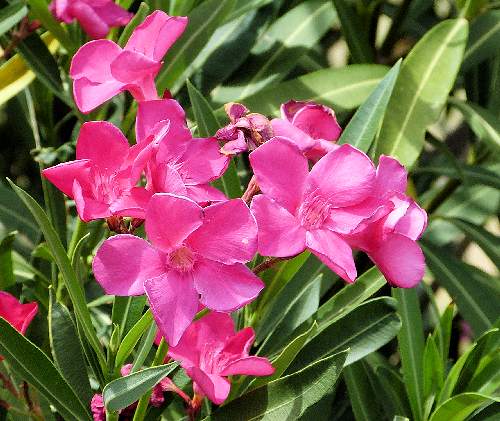
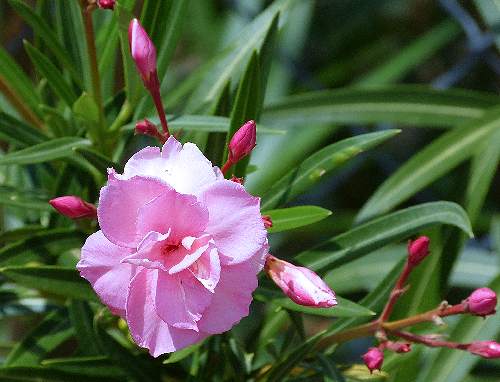
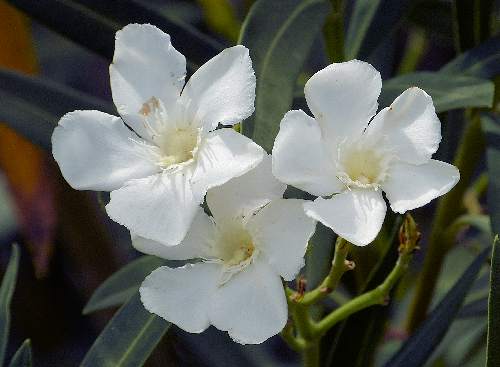
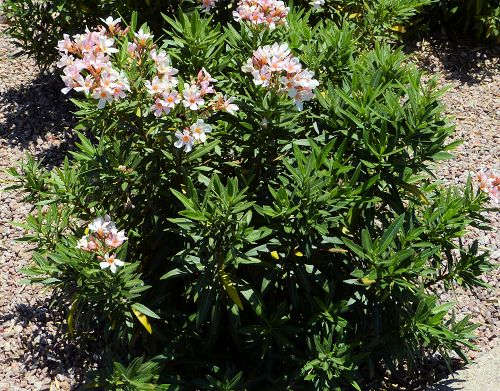
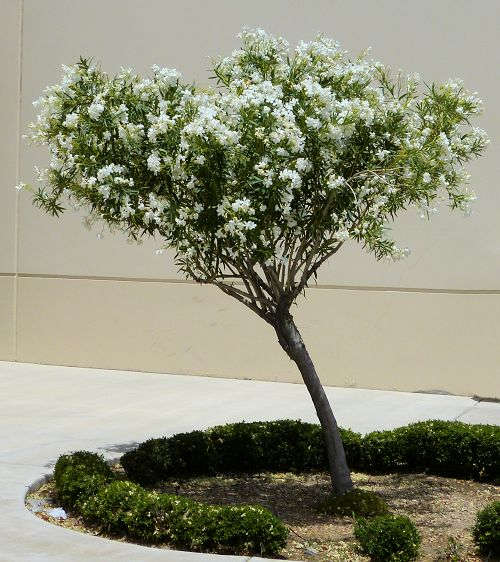
Latest update: October, 2021
© 2008-2025 by GardenOracle.com

